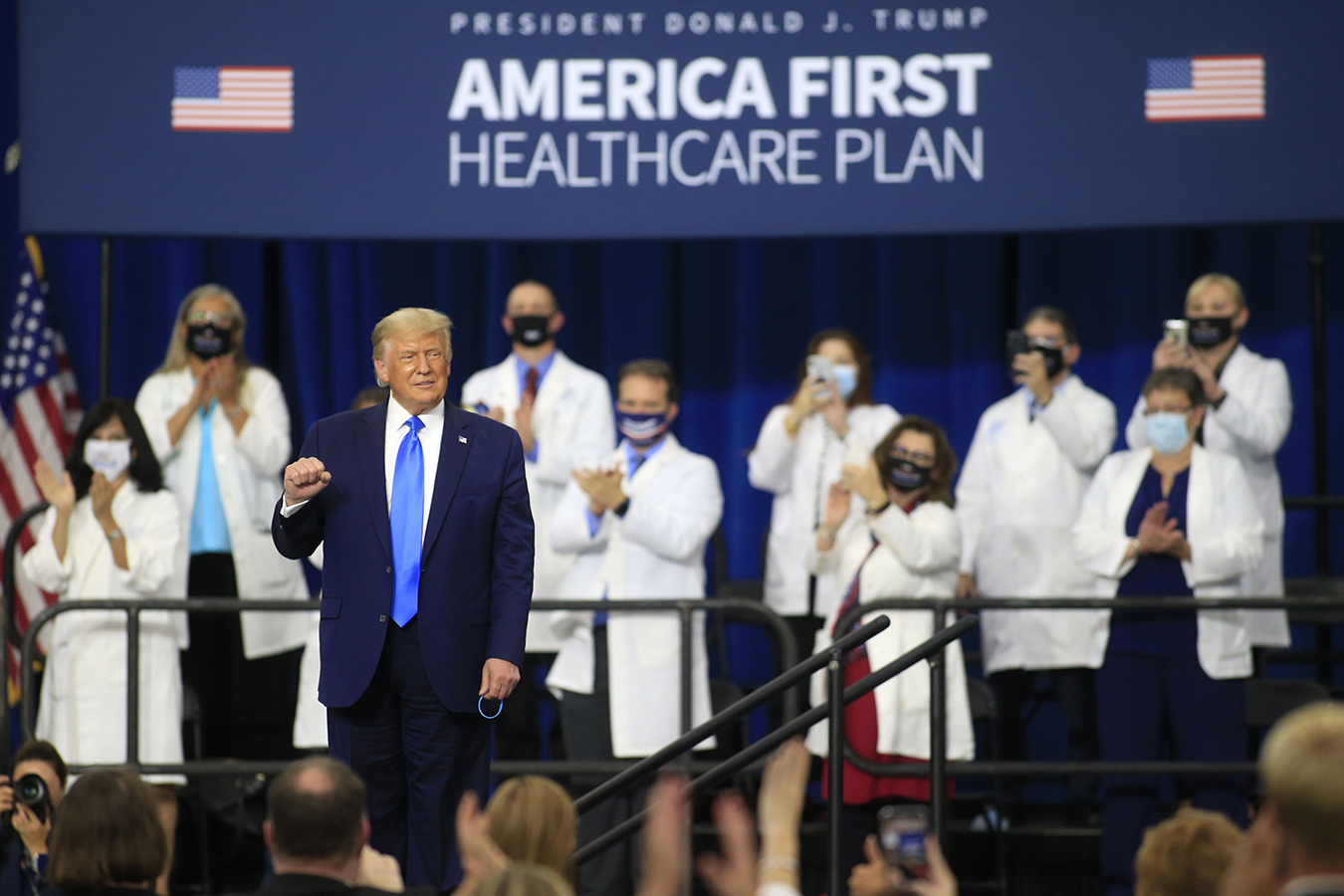As the political landscape evolves, so does the discourse surrounding healthcare policies. During Donald Trump’s first term as President, healthcare reform took center stage with promises of dismantling the Affordable Care Act (ACA) and introducing an alternative plan. With the possibility of a second term, it’s essential to delve into Trump’s health care plan and contemplate what the future might hold for the nation’s healthcare system.
The Foundation of Trump’s Health Care Plan
During his first term, President Trump aimed to dismantle the Affordable Care Act, commonly known as Obamacare. The cornerstone of Trump’s health care plan revolved around reducing government involvement and fostering a more market-driven approach to healthcare. Key elements of his proposals included expanding Health Savings Accounts (HSAs), increasing price transparency, and fostering competition among healthcare providers to drive down costs.
1.1 Expanding Health Savings Accounts (HSAs):
Trump’s plan emphasized the expansion of Health Savings Accounts, enabling individuals to save money tax-free to cover medical expenses. The goal was to empower individuals to take control of their healthcare spending, fostering a consumer-driven approach to healthcare.
1.2 Price Transparency:
Aiming to increase transparency within the healthcare industry, Trump proposed measures to compel providers to disclose the costs of their services. The idea was to enable patients to make informed decisions about their healthcare, promoting competition among providers and, in turn, potentially reducing overall costs.
1.3 Fostering Competition:
Trump’s plan sought to foster competition among healthcare providers across state lines. By allowing insurers to sell plans across state borders, the intention was to increase options for consumers and drive down prices through market competition.
The Attempt to Repeal and Replace Obamacare
Throughout his first term, Trump and Congressional Republicans made several attempts to repeal and replace the Affordable Care Act. However, these efforts faced significant challenges, and a comprehensive replacement plan did not materialize. Instead, the focus shifted towards dismantling specific components of Obamacare, such as the individual mandate, which required individuals to have health insurance or face a penalty.
2.1 The Individual Mandate:
One of the key changes implemented during Trump’s first term was the removal of the individual mandate penalty through the Tax Cuts and Jobs Act of 2017. While the mandate itself remained, the penalty for non-compliance was reduced to zero dollars, effectively neutralizing its enforcement.
2.2 Executive Orders and Regulatory Changes:
President Trump utilized executive orders and regulatory changes to reshape elements of the healthcare landscape. For instance, he expanded short-term health plans, offering consumers more affordable, albeit less comprehensive, coverage options. Critics argued that these changes could undermine the stability of the broader insurance market.
The Unfinished Business and Future Implications
With the prospect of a second term, questions arise about the continuation and evolution of Trump’s health care plan. While the President has expressed intentions to unveil a comprehensive health care plan, as of the knowledge cutoff in January 2022, no such plan had materialized.
3.1 The Push for Pre-existing Condition Protections:
A recurring promise from President Trump has been a commitment to protect individuals with pre-existing conditions. Despite the absence of a detailed replacement plan for the ACA, Trump has emphasized his dedication to ensuring that Americans with pre-existing conditions would have access to affordable health insurance.
3.2 Prescription Drug Pricing:
Trump has consistently highlighted the need to address rising prescription drug prices. During his first term, the administration proposed several initiatives to lower drug costs, including the introduction of a “most-favored-nation” pricing model and facilitating the importation of cheaper prescription drugs from abroad. The success and continuity of these efforts would likely be a focal point in a second term.
The Role of the Supreme Court and Potential Legislative Actions
The future of healthcare reform under President Trump is intrinsically tied to various factors, including the role of the Supreme Court and potential legislative actions. The Supreme Court’s decision on the constitutionality of the Affordable Care Act, expected in 2021, could shape the trajectory of health care policy in the United States.
4.1 Supreme Court’s Decision on the ACA:
The Supreme Court’s decision on the Affordable Care Act holds significant implications. If the Court were to declare certain provisions of the ACA unconstitutional, it could prompt renewed efforts to enact a replacement plan, either through executive actions or legislative measures.
4.2 Legislative Pathways:
The ability to enact comprehensive healthcare reform hinges on legislative actions. A second term for President Trump would likely involve collaboration with Congress to pass legislation that aligns with his vision for healthcare. The balance of power in Congress, the willingness of lawmakers to engage in bipartisan efforts, and the public’s response to potential legislative changes will all play pivotal roles.
Conclusion:
As the nation contemplates the possibility of a second term for President Trump, the future of healthcare reform remains a central and evolving issue. Trump’s health care plan, rooted in reducing government involvement and fostering market-driven approaches, is poised for potential expansion and refinement. The unfinished business of addressing pre-existing condition protections, prescription drug pricing, and the Supreme Court’s decision on the Affordable Care Act will likely shape the trajectory of healthcare policy in the coming years. The path forward will depend on a combination of executive actions, legislative initiatives, and the evolving dynamics of the broader political landscape.




Leave a Reply